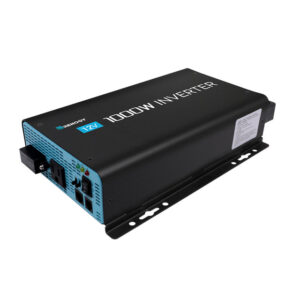
Solar Rebates: Your Ticket to Savings
Imagine slashing your electricity bill and doing good for the planet at the same time. That’s the power of solar panels. But here’s the cherry on top: solar rebates. These are sweet deals offered by governments and companies that put money back in your pocket for choosing solar energy. Think of them as a ‘thank you’ for helping to create a cleaner environment.
What Are Solar Rebates and How Do They Work?
Solar rebates are like a high-five for your wallet. They’re incentives that reduce the cost of installing solar panels. You buy and set up your shiny new solar system, and in return, you get a rebate, which is a partial refund of the cost. It’s a simple give-and-take that makes going green a lot more appealing.
These rebates can come from various places. Sometimes it’s the government giving you a tax credit, other times it’s the solar company itself offering a discount. Either way, it’s a win for you. And the best part? You’re not just saving money; you’re also powering your home with clean, renewable energy.
The Impact of Rebates on Your Solar Panel Costs
Let’s talk numbers. Solar rebates can significantly lower the upfront cost of solar panels. For instance, if you’re looking at a $20,000 system, a rebate could shave off thousands. This means your dream of harnessing the sun’s power could be closer than you think. Plus, with the cost of solar tech dropping every year, there’s never been a better time to invest.
Unpacking Sunrun’s Solar Panel Rebates
Sunrun, a leading solar panel provider, offers various rebates that make the transition to solar smooth and affordable. They understand that switching to solar is a big decision, so they provide incentives to ease the financial burden and encourage homeowners to take the leap.
The Different Types of Incentives Offered by Sunrun
Here’s the scoop on what Sunrun brings to the table:
-
Direct Rebates: These are upfront discounts on your solar panel purchase, lowering the initial cost.
-
Performance-Based Incentives: Get paid for the energy your panels produce, often calculated per kilowatt-hour.
-
Referral Bonuses: If you get your friends on board with Sunrun, you could both benefit from a nice bonus.
-
Zero-Down Financing: Sunrun offers plans that let you start without any upfront payment, easing the financial strain.
Navigating Sunrun Rebates: Step-by-Step Guide
Getting your hands on Sunrun rebates is like following a treasure map. Here’s how to claim your bounty:
-
Consultation: Start with a chat with Sunrun to understand your options.
-
Proposal: They’ll tailor a solar solution for you and highlight the rebates you’re eligible for.
-
Installation: Once your panels are up and running, Sunrun will help you process the rebates.
With Sunrun, you’re not alone in the paperwork jungle. They’ll guide you through every step, ensuring you get the maximum savings with minimum hassle.

Maximizing Your Savings with State and Federal Incentives
Think of state and federal incentives as a double scoop of savings on your solar sundae. On one hand, state rebates can vary widely, but they all serve the same purpose: to make solar energy more accessible. On the other hand, the federal government offers the Solar Investment Tax Credit (ITC), which can reduce your tax bill by a percentage of your solar installation costs.
Combining these incentives can lead to substantial savings. It’s like stacking coupons; the more you stack, the more you save. And when you add Sunrun’s rebates on top, the cost of going solar can drop dramatically, making it a smart financial move for many homeowners.
Remember, these incentives won’t last forever. They’re designed to boost solar adoption, but as solar becomes more mainstream, the incentives may decrease. So, the time to act is now – to lock in those savings and start making a difference for both your budget and the planet.
Shining a Light on State-Specific Solar Rebates
Every state has its own flavor of solar rebates, and they can be quite generous. These rebates are tailored to the unique needs of the state’s residents and can vary widely. For instance, sunny California might offer different incentives than cloudy Oregon. It’s all about checking what’s on offer in your home state and taking advantage of these local deals to boost your savings.
Understanding Local Utility Rebates
Utility companies sometimes have their own rebates, which work alongside state incentives. They might offer a rebate for each watt of solar power installed, or a lump sum once your system is up and running. It’s like getting a pat on the back from your utility provider for generating your own clean energy. Be sure to give them a call or check their website for details.
Identifying State Tax Credits and Exemptions
Tax credits are different from rebates but just as sweet. They reduce the amount of tax you owe, dollar for dollar. Some states also offer property and sales tax exemptions for solar installations, meaning you could be exempt from paying taxes on the value your solar panels add to your home or the sales tax on the purchase of the solar system. It’s like a financial high-five for going green.
Harvesting the Sun: Federal Solar Investment Tax Credit (ITC)
The Federal Solar Investment Tax Credit, known as the ITC, is the big kahuna of solar incentives. It’s available to everyone in the U.S. and can reduce the cost of your solar system by a significant percentage. This credit applies to both residential and commercial systems, making it a universal boost for solar adoption.
How the Federal ITC Works
The ITC is a tax credit that you can apply to your federal income taxes. It’s based on a percentage of the total cost of your solar installation. You simply install your solar panels, fill out the right IRS form, and you’ll get that percentage back when you file your taxes. It’s like the government is footing part of the bill for your solar journey.
Upcoming Changes to Solar ITC and How to Prepare
The ITC isn’t set in stone. It has been scheduled to step down in percentage over the years. To make sure you get the most out of it, stay informed about the current rate and plan your solar project accordingly. If you’re considering solar, it might be wise to act sooner rather than later to lock in the higher credit rate.

Eligibility Criteria: Do You Qualify for Solar Rebates?
Not everyone qualifies for solar rebates, and there are a few boxes you’ll need to check. Generally, you need to own your solar system outright, have enough tax liability to claim a credit, and install the system in your primary residence. It’s also important that the solar panels are new and haven’t been used before. If you tick all these boxes, you’re likely on your way to enjoying some solar savings.
Residential vs. Commercial: Solar Rebates for Different Types of Properties
Whether you’re a homeowner or a business owner, solar rebates can play a big role in your decision to go solar. Residential rebates are designed for individuals and families looking to cut their home energy costs. On the flip side, commercial rebates are targeted at businesses of all sizes aiming to reduce operational expenses and showcase their commitment to sustainability. Each has its own set of rules and benefits, so it’s crucial to understand which category you fall into and what incentives are available to you.
Essential Documentation for Claiming Your Solar Rebates
When it comes time to claim your solar rebates, you need to be ready with the right paperwork. Think of it as gathering your tools before you start a job. Having everything in order will make the process smoother and faster. So, what do you need? Let’s break it down.
Proof of Installation and Costs
First up, you’ll need to show proof that your solar panels were installed and how much you paid for them. This usually means keeping a copy of your contract with the installer, any receipts or invoices, and a certificate of installation. These documents are like golden tickets that unlock the door to rebate savings.
IRS Forms and Legal Requirements
When dealing with tax credits like the federal ITC, the IRS requires specific forms to be filled out. Form 5695 is the star of the show here; it’s where you’ll report the costs of your solar system to calculate your credit. Remember, the IRS is particular about documentation, so make sure everything is accurate and complete to avoid any hiccups.
Realizing the Environmental and Financial Gains
Adopting solar isn’t just about the here and now. It’s an investment in a brighter future—both for the planet and your bank account. By choosing solar, you’re reducing your carbon footprint and locking in lower energy costs for years to come. It’s a powerful combo that pays dividends in more ways than one.
Evaluating the Long-Term Benefits of Switching to Solar
Switching to solar is like planting a seed that grows into a tree of benefits. Over time, you’ll see a drop in your energy bills as you generate your own power. Plus, as energy prices rise, your savings could increase too. And let’s not forget the boost to your home’s value and the positive impact on the environment. It’s a win-win situation that keeps on giving.
Lower Energy Bills and Future Savings
Imagine a life where your energy bills are dramatically lower, or maybe even nonexistent. Solar panels can make that a reality. After the initial investment, the energy your panels produce is essentially free. And with the longevity of modern solar panels, you’re looking at potential savings for decades. It’s like giving yourself a long-term discount on energy.
Positive Environmental Impact and Your Carbon Footprint
Switching to solar is like choosing the scenic route for your daily commute. It’s not just about getting from point A to point B; it’s about enjoying the journey and making a positive impact along the way. Solar panels are a clean energy source, which means they don’t produce harmful emissions that contribute to climate change. By choosing solar, you’re effectively reducing your carbon footprint—the total amount of greenhouse gases your lifestyle generates. It’s a step towards a greener, healthier planet for future generations.

Mapping Your Solar Journey: Next Steps After Rebates
So, you’ve decided to embrace solar energy and you’ve navigated the world of rebates. What’s next? It’s time to roll up your sleeves and embark on the exciting journey of solar panel ownership. This means getting your system installed, understanding how to maintain it, and learning how to track its performance. With the right approach, you’ll maximize the benefits of your solar investment.
Installation and Maintenance Tips for Longevity
Proper installation and maintenance are key to getting the most out of your solar panels. Always work with a certified installer to ensure your panels are set up correctly. Once they’re up, keep them clean and free of debris to maintain peak performance. Regular check-ups by a professional can also prevent small issues from becoming big problems. It’s like caring for a garden; a little attention goes a long way in ensuring a bountiful harvest.
Monitoring Your Solar System’s Performance
Keeping an eye on your solar system is like watching a pot of water start to boil. You want to know when it’s working and when it’s not. Most modern solar systems come with monitoring software that allows you to track energy production in real-time. This helps you understand your system’s output and can alert you to any issues that need addressing. It’s a dashboard for your renewable energy journey, giving you the insights to steer towards maximum efficiency.
Key Takeaways: Brighter Future with Solar Rebates
-
Solar rebates and incentives are like a financial pat on the back for choosing clean energy.
-
Combining state, federal, and Sunrun rebates can lead to significant savings on installation costs.
-
Proper installation and maintenance ensure your solar panels perform efficiently for years to come.
-
Monitoring your system’s performance allows you to optimize your solar energy use.
-
Embracing solar power reduces your carbon footprint and contributes to a healthier planet.
Frequently Asked Questions (FAQ)
Can solar rebates be combined with other incentives?
Yes, you can often combine solar rebates with other incentives. Think of it as stacking your favorite toppings on a pizza—the more you add, the better it gets. Solar rebates can typically be used alongside state and federal tax credits, as well as utility company incentives. However, it’s important to read the fine print, as some programs may have specific rules about combining offers. When in doubt, consult with a solar expert or a tax professional to ensure you’re maximizing your savings.
How long does it take to receive a solar rebate?
After you’ve leaped into the solar world, you’re probably eager to see some of that rebate cash. The wait can be like watching paint dry, but it’s usually worth it. The timeline for receiving a solar rebate can vary. Some rebates come quickly, within a few weeks of installation, while others, like tax credits, only materialize when you file your annual taxes. The key is to submit all your paperwork promptly and accurately. Stay in touch with your solar provider, as they can often give you updates on the status of your rebate.
Are solar rebates available for leased solar panel systems?
Leasing solar panels can be like renting an apartment – you get the benefits without owning the equipment. But when it comes to rebates, the picture changes a bit. Typically, solar rebates and tax credits are only available to the owner of the solar system. So, if you lease your panels, the company that owns them gets the rebates. However, don’t let that discourage you. Leasing companies often pass these savings on to you in the form of lower monthly payments.
What happens to my solar rebates if I sell my home?
Selling your home with solar panels can be a big plus – it’s like having a built-in value booster. But what about the rebates? If you’ve received a rebate for your solar panels, it’s usually yours to keep, even if you move. Tax credits, however, are a different story. If you sell before the end of the tax year, you might have to prorate the credit for the time you lived there. It’s always best to consult a tax advisor to understand the implications fully.
How do I know if new solar rebate programs become available?
Staying on top of new solar rebate programs is like keeping an eye out for sales at your favorite store – you don’t want to miss out on a good deal. The best way to stay informed is to check with local solar energy advocacy groups, government websites, or your utility company. Signing up for newsletters from solar energy websites can also keep you in the loop. And, of course, a trusted solar provider will be up-to-date on the latest incentives and can advise you accordingly.
In conclusion, solar rebates are a fantastic way to reduce the cost of going solar and start saving on your energy bills. By understanding how they work, what types are available, and how to navigate the claiming process, you can maximize your savings and make a smart investment in your home and the environment. The journey to a solar-powered home is bright, and with the right knowledge, you can make the most of it. So, harness the power of the sun, enjoy the financial benefits, and take pride in contributing to a cleaner, greener world.



